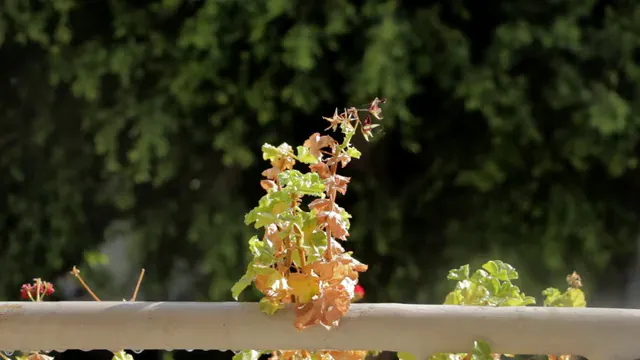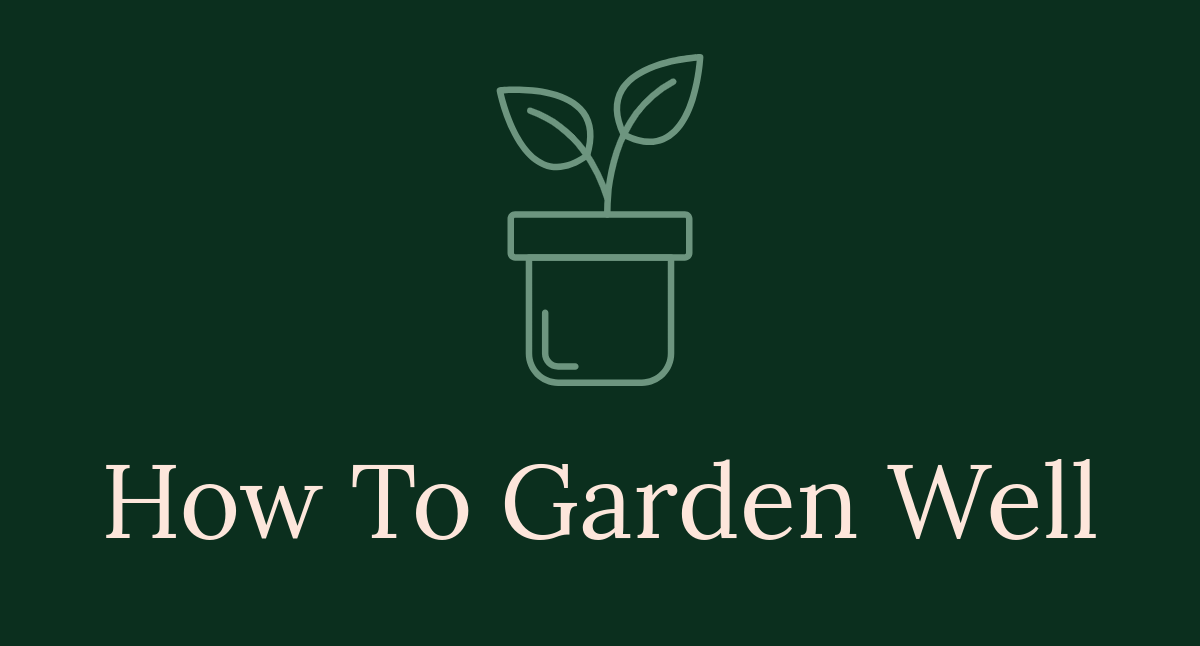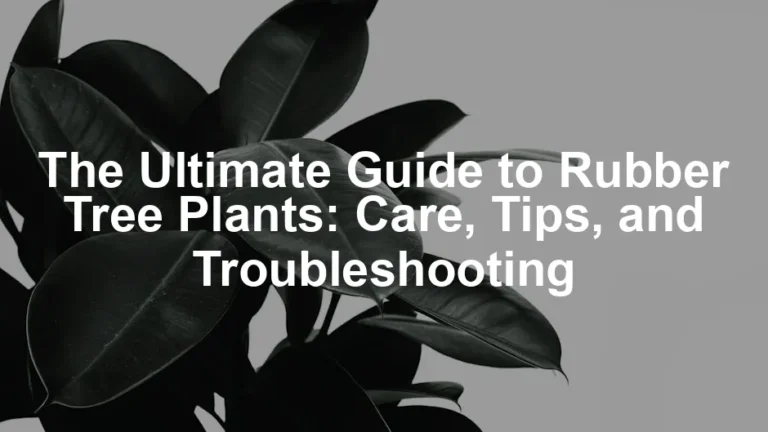

Guide to Square Foot Gardening for Small Spaces
Introduction
Square foot gardening (SFG) is a game-changer for urban and small-space gardeners. Imagine growing a lush garden in a tiny corner of your yard or balcony. This method optimizes every inch, allowing you to cultivate a variety of plants in a limited area. It’s perfect for those who crave fresh veggies but have little room to spare.
One of the biggest perks? You can grow a surprising amount of food in just a small plot, often yielding more than traditional gardening methods. No need for extensive weeding or complex maintenance routines. SFG is straightforward and beginner-friendly, making it accessible for everyone, from the seasoned green thumb to the curious novice.
In this guide, you’ll learn the ins and outs of square foot gardening. From defining the method to exploring its benefits, we’ll equip you with the knowledge to create your own flourishing garden. Get ready to embrace your inner gardener and transform your small space into a verdant paradise!

What is Square Foot Gardening?
Square foot gardening is a simple yet effective gardening technique developed by Mel Bartholomew in the 1980s. This method divides your garden space into a grid of one-foot squares, allowing for organized and efficient planting. Instead of traditional rows that can waste precious space, each square is dedicated to specific plants, maximizing yield and minimizing waste.
Typically, a square foot garden is set up in a raised bed measuring 4 feet by 4 feet, which contains 16 individual squares. But don’t worry! You can easily adapt this method to fit your unique space. Whether you have a small balcony or a compact backyard, SFG can be adjusted to suit any area.
The beauty of square foot gardening lies in its versatility. Each square can be planted with different crops, allowing for a colorful array of vegetables and herbs. Plus, this method encourages companion planting, where certain plants thrive together, enhancing growth and deterring pests. With SFG, you can cultivate a diverse garden that flourishes in limited spaces.

Benefits of Square Foot Gardening
Space Efficiency: One of the most significant advantages of square foot gardening is its ability to maximize yield in small areas. By grouping plants closely, you can grow more food without needing a vast garden.
Reduced Weeding: The compact nature of SFG means less exposed soil, which leads to fewer weeds. The close planting helps shade out unwanted plants, saving you time and effort.
Water Conservation: Square foot gardens retain moisture more effectively than traditional gardens. The dense planting reduces evaporation, meaning your plants stay hydrated longer and require less frequent watering.
Less Labor: With an organized grid system, SFG reduces maintenance tasks. You’ll spend less time weeding and more time enjoying your garden. Plus, raised beds make it easier to tend to your plants without excessive bending.
Beginner-Friendly: If you’re new to gardening, square foot gardening is an excellent way to start. The clear structure and simple planting guidelines make it accessible and enjoyable for all skill levels.
So, are you ready to get started with your own square foot garden? Let’s dive into the details of how to create your very own green oasis!

Choosing the Right Location
Finding the perfect spot for your square foot garden is crucial. First, ensure it gets plenty of sunlight. Ideally, your garden should bask in 6 to 8 hours of direct sunlight daily. Plants thrive on sunshine, and without it, your veggies could sulk like a toddler denied dessert.
Next up, let’s talk drainage. A soggy garden bed is a recipe for disaster. To avoid this, select a location that naturally drains well. Steer clear of low spots where water tends to pool. If your chosen spot isn’t perfect, consider elevating your garden bed. A raised bed can work wonders, allowing excess water to drain away while keeping your plants happy and healthy.
Lastly, accessibility matters too! Choose a location close to your home for easy watering and harvesting. You wouldn’t want to trek miles just to grab a tomato, right? By ensuring sunlight, good drainage, and accessibility, you set the stage for a flourishing square foot garden.

Building Your Square Foot Garden Bed
When it comes to building your square foot garden bed, you have a few material options. Traditional choices include wood, bricks, or even recycled materials. Cedar is a popular pick due to its durability, but pine works too if you’re on a budget. Avoid old pressure-treated wood, as it can leach harmful chemicals into the soil.
Once you’ve chosen your materials, it’s time to assemble your garden frame. Aim for a 4×4-foot design, which creates 16 individual squares. Don’t forget to secure your corners! This structure is your garden’s foundation, so make it sturdy.
Now, let’s fill it with the right soil mix. Enter Mel’s Mix! This blend consists of one-third compost, one-third peat moss or coconut coir, and one-third vermiculite. Why is this mix beneficial? Well, it provides excellent drainage while retaining moisture. Plus, it’s rich in the nutrients your plants crave. Get your own Garden Soil Mix (Mel’s Mix) to ensure your plants thrive!
To create your grid system, measure your squares. Use string, stakes, or wood slats to mark off the sections. This grid will guide your planting, ensuring each vegetable has its designated space. For instance, you can plant a single tomato in one square, while cramming 16 carrots into another.
With your bed built and grid established, you’re ready to dive into the fun part—planting! The organized setup will make your gardening experience a breeze, allowing you to maximize every inch of your small space.
Planning Your Square Foot Garden
What to Plant?
The heart of square foot gardening lies in knowing what to plant. Here’s a list of recommended vegetables and the ideal number to plant per square foot.
- Carrots: 16 per square
- Radishes: 16 per square
- Spinach: 9 per square
- Bush Beans: 9 per square
- Lettuce: 4 per square
- Tomatoes: 1 per square
- Peppers: 1 per square
- Cucumbers: 2 per square
- Eggplant: 1 per square
Spacing is crucial. The number you plant depends on the size of the vegetable. Larger plants need more room, while smaller veggies can cozy up together.
Companion planting is another important strategy. Pairing plants wisely can lead to healthier crops. For example, tomatoes and basil make a great duo. Basil can help repel pests while enhancing the flavor of your tomatoes. If you’re interested in learning more about these strategies, check out our guide on companion planting strategies for increased yield.
Companion planting can enhance growth and deter pests, making your garden more productive. Learn more about companion planting strategies here.
On the flip side, avoid pairing plants that compete for nutrients or space. Keep your garden harmonious by selecting the right combinations.
Now that you’ve chosen your plants and companions, you’re ready to create a thriving garden. With careful planning, your square foot garden will yield a bountiful harvest, transforming your small space into a food-producing powerhouse!

Example Layouts
Creating a square foot garden is like designing your very own veggie patch masterpiece! Let’s paint a picture of a 4×4 bed, which boasts 16 squares. Here are a few delightful combinations to inspire your planting:
- Salad Sensation:
- Square 1: 1 head of lettuce
- Square 2: 4 radishes
- Square 3: 4 spinach plants
- Square 4: 1 tomato plant
- Square 5: 4 green onions
- Square 6: 4 arugula plants
- Square 7: 4 carrots
- Square 8: 4 beets
- Square 9: 4 basil plants
- Square 10: 4 bush beans
- Square 11: 4 cucumber plants
- Square 12: 1 pepper plant
- Square 13: 4 peas (trellis supported)
- Square 14: 4 zinnias (for bees!)
- Square 15: 1 eggplant
- Square 16: 4 marigolds (pest deterrent)
- Stir-Fry Delight:
- Square 1: 1 broccoli
- Square 2: 4 bok choy
- Square 3: 4 carrots
- Square 4: 4 green beans
- Square 5: 1 bell pepper
- Square 6: 4 radishes
- Square 7: 1 zucchini
- Square 8: 4 onions
- Square 9: 4 garlic bulbs
- Square 10: 4 kale plants
- Square 11: 4 chard plants
- Square 12: 4 tomatoes
- Square 13: 1 squash
- Square 14: 4 peas (with trellis)
- Square 15: 4 sweet corn (if space allows)
- Square 16: 4 nasturtiums (edible flowers)
Visualizing these layouts can help you stay organized and keep your garden visually appealing. Plus, with companion planting, you can enhance growth, deter pests, and make mealtime even more delicious!

Maintaining Your Square Foot Garden
Watering and Fertilizing
Watering your square foot garden can feel like a chore, but it doesn’t have to be a struggle! Efficient watering practices are key. Aim for deep, less frequent watering to encourage strong root growth. On hot days, consider watering in the early morning or late evening. This minimizes evaporation and gives your plants a cool drink when they need it most.
Mulching is your garden’s best friend! A layer of organic mulch—like straw or shredded leaves—will help retain moisture, suppress weeds, and even keep the soil temperature steady. Applying mulch after planting will keep those thirsty roots hydrated during dry spells. Check out this great Organic Mulch that will do the job perfectly!
Fertilizing is crucial too, but don’t overdo it! Use a balanced organic fertilizer during the growing season. Apply it when your plants are actively growing, generally every four to six weeks. This will keep your crops nourished without overwhelming them. And remember, a good soil mix like Mel’s Mix—rich in compost—can often reduce the need for additional fertilizers.

Pest and Disease Management
Every gardener has faced the dreaded pests! In a square foot garden, you’re likely to encounter common culprits like aphids, slugs, and caterpillars. But fear not; natural management strategies can save the day!
Start with preventive measures. Keeping plants healthy through proper watering and fertilizing will boost their resistance to pests. Companion planting helps too! For example, marigolds can deter nematodes, while basil can ward off flies near tomatoes. If you need a good organic pest control solution, try this Organic Pest Control Spray!
When you spot pests, act quickly. Hand-pick larger ones like caterpillars, or use neem oil for smaller pests. Soap sprays can also be effective for aphids. Rotate your crops each season to reduce disease buildup in the soil, and practice good hygiene by removing dead or diseased plants promptly.
Keep a watchful eye on your plants, checking for yellowing leaves or wilting, which can signal disease. Healthy plants are less prone to pests, so with a little TLC, your square foot garden can thrive, providing a bountiful harvest without the hassle.

Succession Planting
Succession planting is a clever gardening technique. It involves planting quick-growing crops immediately after harvesting slower ones. This method keeps your garden productive year-round. Imagine pulling out radishes and popping in some spinach!
One of the biggest benefits? You maximize your space. Instead of letting a plot sit empty, you’ll always have something growing. This method also helps you enjoy a continuous harvest. Ever tasted fresh lettuce in early spring? It’s delightful!
Fast-maturing crops like lettuce, radishes, and beans are perfect for this. They can be planted soon after you harvest slower ones, like carrots or beets. Not only does this reduce waste, but it also means more produce for your table. And if you want to keep track of your planting schedules, a Gardening Journal can be a great help!
Additionally, succession planting can help mitigate pest issues. By constantly changing what’s in your garden, you disrupt the life cycles of pests. This means fewer invasions and healthier plants. Overall, succession planting is a fantastic strategy for anyone interested in maximizing their square foot garden’s productivity.

Vertical Gardening
Vertical gardening is your secret weapon for maximizing space. It’s all about using trellises, stakes, and cages to support climbing plants. Think of it as a garden skyscraper! For more innovative ideas on vertical gardening, check out our guide on DIY vertical gardening ideas for apartments.
Vertical gardening techniques can help you maximize your space and grow a variety of plants. Explore DIY vertical gardening ideas here.
This technique allows you to grow plants like beans, cucumbers, and tomatoes upwards. By utilizing vertical space, you free up valuable ground for other crops. Imagine a lush green wall of beans beside a patch of lettuce. Beautiful, right?
Trellises can be made from wood, wire, or even PVC pipes. They provide the necessary support while keeping your plants off the ground. This helps prevent diseases and pests, as airflow improves around the plants. If you’re looking for a good trellis, check out this Garden Trellis Netting that will keep your climbing plants happy!
Vertical gardening isn’t just functional; it’s also visually appealing. A well-planned vertical garden can become a stunning focal point in your yard or balcony. Plus, it’s easier to harvest your crops when they’re at eye level. So, get creative and let your garden reach for the sky!

FAQs
What size should my garden bed be?
Your garden bed can be any size, but a common dimension is 4 feet by 4 feet. This size is manageable and allows easy access from all sides. If you have a smaller or larger space, feel free to adjust the dimensions to fit your needs.
How many plants can I grow in one square foot?
The number of plants depends on their size. For example, you can plant 16 carrots, 4 lettuce heads, or 1 tomato plant per square foot. Check specific plant guidelines to optimize your planting density.
Can I use SFG in containers?
Absolutely! Square foot gardening principles work great in containers. Just ensure your container is deep enough (at least 12 inches) to accommodate the root systems of your chosen plants. You can create a beautiful container garden that fits perfectly on a patio or balcony.
What size should my garden bed be?
When it comes to square foot gardening, size matters—but not in the way you might think. While the classic 4×4-foot garden bed is a fan favorite, you’re not locked into that format. The beauty of square foot gardening lies in its flexibility. If you have a narrow balcony or a cozy backyard nook, feel free to adjust the dimensions. Just remember, the aim is to create a space that’s easy to access and maintain.
How many plants can I grow in one square foot?
Ah, the million-dollar question! The number of plants you can squeeze into a square foot depends on their size and growth habits. For instance, if you’re planting carrots, you can pack in a whopping 16 of those crunchy little roots. On the other hand, a lone tomato plant will need its space—just one per square.
Can I use SFG in containers?
Absolutely! Square foot gardening principles shine in containers, making them a great option for those with limited space. If your balcony or patio is begging for some green, container square foot gardening is the way to go. Just ensure your container is at least 12 inches deep to accommodate root growth.
Please let us know what you think about our content by leaving a comment down below!
Thank you for reading till here 🙂
All images from Pexels



